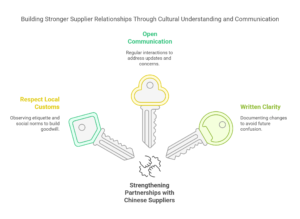Utility model patent applications can be filed concurrently with innovation patent applications in China. The benefit of filing utility model patent applications concurrently with innovation patent applications is that a utility model patent can be granted much more quickly than an innovation patent application.
In China, patent applications are received and examined by the National Intellectual Property Administration of China (CNIPA). It’s worth noting that patents are territorial, which means that you’ll only be protected from infringement in China if you have a Chinese patent. CNIPA grants three types of patents: invention patents, utility model patents, and design patents.
Utility model patent grants in China can be given in a short period of time. The evaluation of this type of patent rights is six to twelve months rather than the two to four years required for an invention patent application because they do not require a thorough examination. In the meantime, the utility model patent will protect you while your application for an invention patent is being reviewed.
Patents on utility models are in the Chinese patent system valid for ten years from the filing date according to Chinese patent law. On the other hand, patents for inventions are more valuable than utility patents. The main reason for this is that they are valid for twenty years and have a wider scope of protection. These types of patents cover a more comprehensive range of innovations, preventing patent infringement in a better way than utility patents.
Table of Contents
ToggleThe advantages of filing utility model and invention patent applications at the same time in China
To begin with, the applicant may seek protection for the exclusive right of the idea as early as possible in China by simultaneously filing a utility model and an invention application.
As previously stated, the examination phase of an invention application typically lasts between two and four years in duration. At the same time, the time between filing and receiving approval for a utility model patent (or UM patents) can be as short as six months in some instances.
Suppose foreign applicants simultaneously file both a utility model patent application and an invention trademark patent application, and the utility model patent application and the exclusive rights are granted after six months. In that case, the applicant’s innovation may be protected from that point on.
If foreign companies simply file an invention application that is published after twenty months and then granted after another ten months, the applicant can enforce the patent after thirty months, which is approximately five times the time it takes to obtain a Chinese utility model patent.
When it comes to patent enforcement, an invention patent that has been thoroughly examined outperforms a utility model. However, because of the speed and ease with which utility models can be obtained within the Chinese utility model system, they may be beneficial if the applicant wants to receive protection in China as soon as possible after applying.
A shorter term of protection is better suited for producers with many products with short life cycles. For patent applicants, it is beneficial for covering modifications or adaptations of existing items that do not necessarily qualify for an invention patent but do qualify for a utility model patent.

Dual filing strategy: The utility model patent can be used as a backup for the patent owner
Alternatively, if the invention application is unsuccessful, the utility model patent may be used as a fallback to protect your intellectual property rights. The utility model patent will continue to exist if the invention application is rejected during the examination process due to an alleged lack of inventiveness.
Because of the reduced requirement for inventive steps, a utility model patent may be able to withstand an invalidation action even if the innovation patent application fails substantive scrutiny in court.
The applicant is entitled to keep both the utility model and the innovation patents they have applied for. Assume that the utility model application that was submitted at the same time as the invention application is approved and that the invention application meets all other patentability criteria.
A patent examiner will notify an applicant if their utility model has been abandoned or if the invention has been modified to avoid double patenting in this situation.
If necessary, the applicant may then revise the claims in the innovation application after the grant of the invention patent to include a different scope from the scope of the claims in the utility model application if this is required. Thus, the patentee will have two patents covering other inventive areas than the previous one.
What other advantages does the utility model protection have? An important reason for applying for utility patent protection in China is the ability to enforce a utility model patent in both administrative and civil proceedings, opening up more enforcement options.
It’s also worth noting that filing a utility model application is a fairly inexpensive endeavour. Utility model patents while being short-term patents, are less expensive to obtain and maintain than invention patent applications. You might end up not having any additional translation fee if your utility model patent applications in Mainland China are translated simultaneously as innovation patent applications.
Conclusion
Do you need help with protecting your intellectual property in China: trademarks, copyright and patents?









